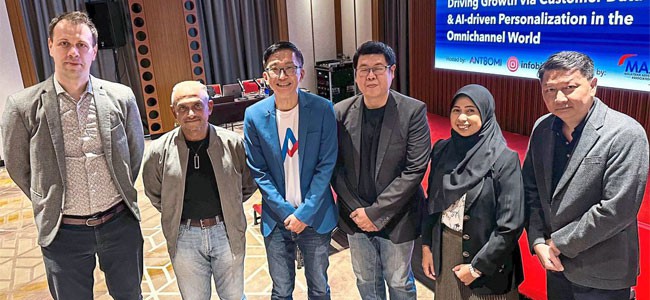Malaysian Advertisers Association helps the industry manage uncertainties
AS the marketplace grapples with uncertainties, the Malaysian Advertisers Association (MAA) is leading efforts on several fronts to assist the advertising industry.
Among others, it has taken the initiative to set up a GST Technical Committee to minimise disruption to the industry as a result of the goods and services tax.
MAA president Margaret Au-Yong says the committee, which held its first meeting last month, comprises representatives from the MAA, Association of Accredited Advertising Agents Malaysia (4As), Media Specialists Association (MSA), Malaysian Newspaper Publishers Association (MNPA) and Outdoor Advertising Association of Malaysia.
“The ad industry is unique in that it does not have ‘one-stop shops’, i.e. services are outsourced leading to a longer list of creditors. The industry also relies on trust and long-term relationships such that credit terms could be extended. Now with GST, it will be imperative to be diligent and disciplined to adhere to the agreed credit terms,” Au-Yong tells StarBizWeek.
With the aid of Taxand Malaysia, the committee will review, analyse and identify potential solutions in relation to the GST issues and implications specific to the ad industry. Subsequently, representatives from both GST Technical Committee and Taxand will consult and engage with the Customs Department, where relevant.
Au-Yong advises advertisers to look for the silver lining and capitalise on it rather than be paralysed by the changes taking place.
She says the committee will get feedback from those in the industry post-GST implementation. Hence it will be able to submit relevant recommendations based on actual case studies to the Customs Department.
Au-Yong says MAA and its partners also realise the need to educate industry members, which will be done via monthly electronic direct mail, talks and eventually a GST guidebook.
MAA is also partnering with other organisations to strengthen its contribution not only to its members but also the public at large.
She says it plans to invite the Malaysian Retail Chain Association (MRCA) and Business Network International (BNI) to be affiliate members. MRCA has 250 leading retail brands with 20,000 outlets nationwide while Business Network International (BNI) is the largest referral organisation of its type in the world with 70,000 members globally (600 in Malaysia).
“With more member businesses on board, MAA, MRCA and BNI can share learnings, seek solutions to challenges and develop young Malaysian marketing professionals to be global advertisers. With its links to international bodies like World Federation of Advertisers (WFA) and Asian Federation of Advertisers Association (AFAA), MAA looks forward leveraging on global/regional case studies, benchmarks that can benefit Malaysian businesses to be equipped to compete in the worldwide marketplace in 2020,” she says.
Au-Yong says the collaboration with MRCA and BNI will empower more businesses to be effective in using appropriate communication channels to reach their desired target audiences and encourage the smaller businesses to be less intimidated by advertising – often perceived as a big budget item – and to explore various advertising avenues by sharing local and global learnings.
This will in turn benefit the Malaysian public with relevant information about products in the marketplace.
Au-Yong says the association will also continue efforts to influence young Malaysians to pursue global advertising excellence.
“There will also be a recruitment drive with co-council alliances such as the 4As, MSA and MNPA, and we’ll bring relevant content to marketers via the CoCreate series and the Effie Bootcamp. We will also be working alongside our business partners, MRCA and BNI, in this area of developing potentials for the next decade.”
Hosting a global event
A major upcoming highlight in the MAA calendar is the WFA Global Marketer Conference in 2016. The association has accepted the invitation to host the event.
“WFA invited us in recognition that Malaysia is the Asean chairman and also that we are an important and fast growing ad market. Furthermore, MAA is a well-established association which has a successful track record in organising conferences,” she says.
The MAA is now waiting for acknowledgement of its acceptance from the executive committee of the WFA. It would mark the first time that this annual conference is held in South-East Asia.
Regarding media, she says the MAA has supported and will play a keen role in the move to have reliable circulation figures for print and digital media through the initiatives of the Audit Bureau of Circulations (ABC) and ABCi, its digital audit unit.
“As digital media gains increasing interest and participation from advertisers, audited figures for this communication channel will be the benchmark for ad placements. Like any other investment, credibility and accountability will be major factors when advertisers consider various print and digital media,” she says.
On the outlook for the year, Au-Yong expects both the consumer and advertiser to be cautious in 2015 due to GST and the free float of local oil prices,
“For the consumer, the element of anxiety will be heightened as to how to manage personal budgets, given the changes such as GST and oil prices. Where the multinationals may be more concerned over the weakened ringgit and smaller businesses, consumers may be looking at the price of petrol instead,” she says.
She says the moderating demand-pull pressure from weaker consumer sentiments is a cause for concern.
Improvement opportunity
Will the big advertisers top up the GST amount or simply shave it off their ad budget?
“This will depend on the company, nature of its business and how it is impacted by the GST – zero-rated, exempted or 6% imposed,” she replies. “Generally, the market sentiment will be cautious. There may be some increased spending before GST, after which most businesses will adopt a ‘wait and see’ approach. So we can expect reduction in ad budgets, with some braver businesses deciding to maintain budgets.”
While things may start off slower and harder this year, she says “surely at some point, they should improve.”
“According to a report published by the Bank of Korea on May 14, 2008 investigating 41 countries, there were 5,586 companies older than 200 years. All these companies must have navigated choppy waters to stand firm till today. Hence, it is to the benefit of all advertisers, big and small, to look for the silver lining and capitalise on it rather than be paralysed by the changes taking place.”
Among others, she sees an opportunity to improve on or even build better infrastructure in this year of transition. “It will take at least a year for all businesses to put in place effective and efficient practices, systems, personnel and improve the supply chain so that the GST will have mid to long-term positive impact. It would be a good time for businesses to scrutinise how they have been operating and tighten any loopholes that are found,” she says.
Au-Yong, who is also Tune Group Sdn Bhd head of marketing and facilities, says this will be the approach taken by Tune Hotels, which will look into various operational details in order to remain competitive in the fast-developing budget hotel category.
She says despite being cautious on GST, some advertisers would endeavor to maintain ad budgets to capture vacuum spots vacated by companies which have reduced spending or not spending on advertising.
She expects fast-moving consumer goods companies – Unilever, Nestle, Procter & Gamble, and Colgate-Palmolive – to remain the country’s biggest advertisers.
She says marketers will also seek to gain more advantage out of the public relations and social media avenues.
*Source from The Star – 7 March 2016
View more MAA & WFA Global Marketer Conference 2016: http://www.wfanet.org/KL/



